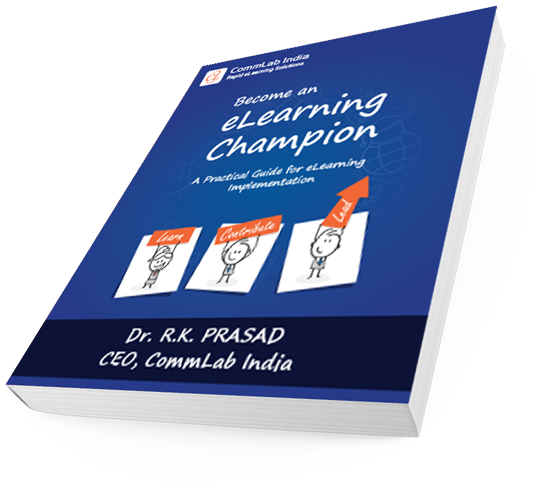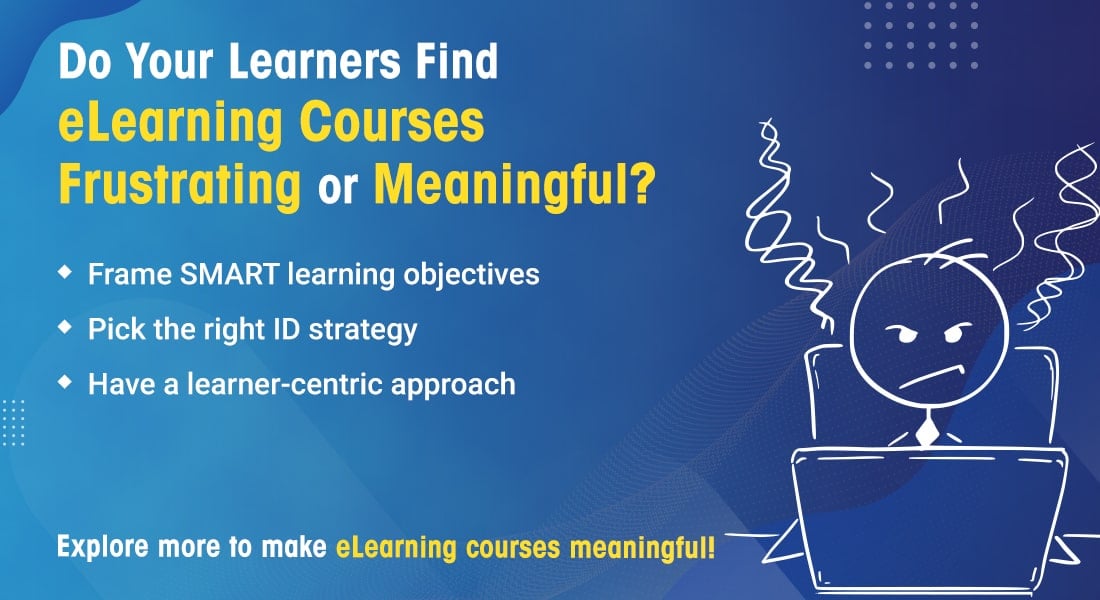How to Develop an Online Course For Self-Directed Learning

Way back in the ‘60s, when Malcolm Knowles proposed his theory on how adults learn, little did he know that one day, it would form the very foundation of corporate training, the world over. In a nutshell, his theory suggests that adults have a need for self-directed learning (full control of their learning). While it has been established that self-directed learning (SDL) is highly successful, trainers are hesitant to handover the training reins to learners; and those who are willing to do so, don’t know how. Online learning provides trainers with ample opportunity for SDL – as we will discuss in this blog; however, a basic understanding of Knowles’ theory and the assumptions associated with it, will help.
→ Download eBook: Become an eLearning Champion!
Give Them a Reason – Fulfil an Immediate Need
Adults need a reason behind any training and will only learn if they will benefit from it. When they know what’s in it for them (the benefit), their interest is stoked, and the learning that ensues is self-directed.
Learners are not interested in fulfilling just any need – they will only learn subjects that promise to fulfil an immediate need, by providing immediate solutions to their most pressing problems. If they don’t get what they need through learning, or they sense that they are being pushed in a direction they do not intend to go, then you risk losing them.
So, instead of conducting ‘blind’ training, training managers must:
- Determine employees’ learning needs
- Understand these needs
- Provide knowledge that satiates these needs
Make a Case with Learning Objectives
Before embarking on a course, learners must know what they can expect from it. A clear set of learning objectives that leaves no room for vague interpretations lets them know what they would have learned on completing the course. Whether they take the course will depend on how convincing these learning objectives and outcomes are. Successful learning objectives follow a set pattern that:
- Describe the behavior that learners can perform (Performance), after training
- Describe the circumstances under which the performance will be carried out (Condition)
- Describe the criteria for acceptance of performance (Criterion)
Awareness that a course will provide desirable outcomes will facilitate self-directed learning.
If, however, a course makes tall promises and then fails to fulfil them, leaners will not pursue the course to the very end. To avoid this, courses must be designed around the learning objectives and outcomes they set out to fulfil.
Give Them Control
Adults want full control over the decisions made regarding their learning. A training program must be designed in a manner that allows them to direct their own learning – what they learn, and how they learn. Self-direction can be encouraged by:
- Creating a repository of courses that learners can choose from
- Providing learners with instant access to courses (no need to seek prior permission)
- Introducing flexible dates to complete compulsory courses
- Increasing the number of attempts to complete a course
Include Internal Motivators
Adult learners respond better to internal motivators than to external motivators. In other words, a good challenge that pushes them out of their comfort zone is likely to excite them more than a bonus would. Allowing them to experience the sweet taste of success when they complete a challenge will not only motivate them, but also lead to:
- Self-realization (of their true potential)
- Self-direction (clear understanding of how to proceed)
- Self-efficacy (increased confidence that translates into greater efficiency and productivity)
Include Instant Assessments and Feedback
Self-directed learning does not stop with letting learners choose what they learn; on the contrary, it follows right through, to the end of the training process. That means that learners will want to follow their progress, assess how much they have learned, and even rate their own progress. Assessments and feedback must be provided in every course and be independent of a trainer’s involvement.
Include pre-training assessments and post-training assessments so that learners can compare the two and self-assess their progress.

Become an eLearning Champion
A Practical Guide to eLearning Implementation
- Basics of eLearning and Recent Trends
- Role of Training in Achieving Business Results
- eLearning Design and Development Process
- And More!
Provide Something for Everyone
A self-directed course has something for everyone. I’m referring to catering to a variety of learning styles (auditory, kinesthetic, and visual learners) here, but don’t limit yourself to this. If there are other ways that you think your learners can be segregated/grouped, then each of these groups’ needs must be met, while the course itself maintains the basic learning objectives that it was intended for.
Outside of developing the course, another way to provide learners with a chance to take control of their learning is to make sure that the courses can be delivered on multiple devices, giving them freedom to access learning on a device of their choice, where they want. You can also make it accessible offline, as well as online, so they can choose when they access these courses.
Make it Collaborative
The Millennial worker considers social learning, otherwise known as collaborative learning, as a critical component of gaining knowledge. Rather than restricting their learning, encourage learners to discuss and compare notes on a course, gain and share knowledge, and make a comparative assessment of their training performance.
If, at this very moment, you are thinking (with an accompanying smirk on your face), “Like I’m gonna let my learners take full control of their learning!”, I don’t blame you. While it might seem that self-directed learning is all about giving your learners full control of their learning, it is not.
Self-directed learning is nice; employees appreciate it, and trainers get to relax a bit; but the freedom that comes with self-directed learning must be limited. There is a subtle balance that exists between freedom and responsibility – a balance that varies with every course, need, audience, and organization. Find that balance and maintain it. The magic mantra is this: Give them too little freedom and they will end up feeling restricted, but give them too much and they will end up feeling lost.





